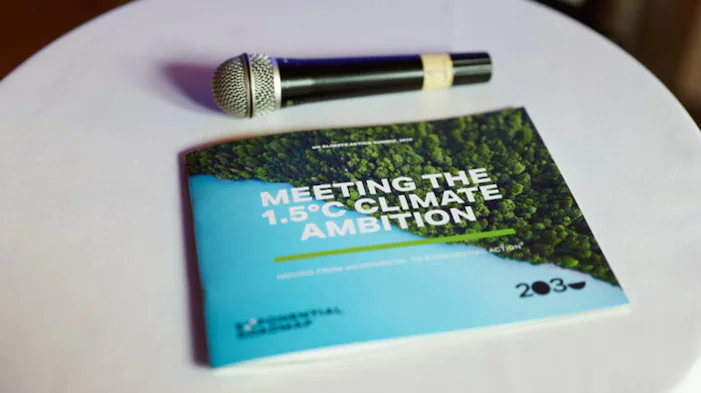How to Engage With Suppliers to Join the 1.5°C Journey
Originally published by Ericsson
Louise Rehbinder, Responsible Sourcing Program Manager
Sara Gorton, Head of Environmental Strategy
Nearly three months after COP26, and six years after the Paris Agreement of 2015, why has so little happened to combat climate change, and how can businesses take action? In light of the newly launched 1.5°C Supplier Engagement Guide, we outline how to engage suppliers to take climate action.
We have just closed the doors behind COP26, yet another gathering of the big players of the world. The event brought together politicians, companies, and organizations to continue discussions on climate change and agree on the path going forward. The basis for the meeting is what was once agreed upon in Paris in 2015 – to limit global warming to well below 2 degrees, preferably to max 1.5 degrees Celsius, compared to pre-industrial levels. So, great things must have happened since then and the curves pointing upwards need to have been bent, right? It is after all six years ago!
But that is not what we saw in reality. Changes in the Earth’s climate have been observed in every region of the world and across the whole climate system with devastating effects on ecosystems, human lives, and local economies. The pace of climate change has intensified in ways that earlier modelling had not foreseen, and ecosystems are reaching tipping points. Scientists can link specific weather events to human-made climate change. We are, without doubt, causing this and the destiny of humankind lies in our own hands.
Why has so little happened since that groundbreaking meeting in Paris 2015? One of the big problems is that everyone seems to be waiting. Countries are waiting for what other countries will do. Scientists are waiting for political action. People are waiting for someone to fix the problem (yet expecting it will not affect them too much). Businesses are waiting for regulatory requirements. Politicians are waiting for when the timing is right, working on pleasing their voters, while at the same time making sure to keep track of Greta’s latest move.
How do we make people act? And for the sake of this blog post, how do we make sure people within businesses act? Often, this climate inactivity originates from insecurity, from not knowing where to start and what steps to take to move forward. When the decision is difficult, we tend to do nothing. If we think it will be costly, we tend to do nothing. And if it takes an effort, we don’t want to do it, we’d rather continue doing business as usual. That is the nature of humans. It’s understandable. And this is the purpose and beauty of this newly launched guide – the 1.5°C Supplier Engagement Guide.
As the name and context suggests, it is a guide for how to engage suppliers to take climate action or quoting the guide itself: “The guide provides practical guidance that any company can utilize to work with suppliers to set and implement a 1.5°C aligned target and move to action.” The aim is to remove that feeling of not knowing how to move forward with climate action in a supply chain, so that more of us can start already today. So, if your company has a supply chain, this guide is relevant for you.
Regardless of whether you are brand new to the topic or if you’ve had a structured way of working for many years, the 1.5°C Supplier Engagement Guide is a possibility for learning and for action. New players will receive guidance on how to build a structure for their work with access to current best practices for supplier climate engagement. Established players can find inspiration to step up their work even further. And for those who have nothing more to learn, they can still contribute by sharing their examples, and thereby strengthen the guide and its best practices, so others can learn and take action.
Read the 1.5°C Supplier Engagement Guide
Read the practical guidance for 1.5°C aligned targets and action throughout global supply chains.
When requesting climate action from suppliers, we need to approach both large and small companies that may have various experience in climate action. To specifically support small- and medium-sized enterprises, SMEs, the SME Climate Hub has been developed. This is a platform that provides simple tools and practices to support SMEs in their commitment to the 1.5°C degree pathway. It can be used as an asset to the 1.5°C Supplier Engagement Guide when approaching SMEs.
To speed up action, collaboration is crucial! We need to work together internally, cross company functions and cross geographies. Furthermore, we need to work together externally, with suppliers, customers, and peers. By learning from each other, taking advantage of each other's strengths, and collaborating to innovate together we will move faster. Re-use of good ideas and focus of resources to get magnitude, rather than aiming for uniqueness, will be key to gain momentum for climate action.
There are fewer than ten years left until 2030, together let’s fill them with action!
Want to learn more?
Read the 1.5°C Supplier Engagement Guide
Here’s how technology for good is helping us restore planet earth.
How can technological innovation mitigate climate change?
This is how digitalization with 5G enables further acceleration of climate action.



